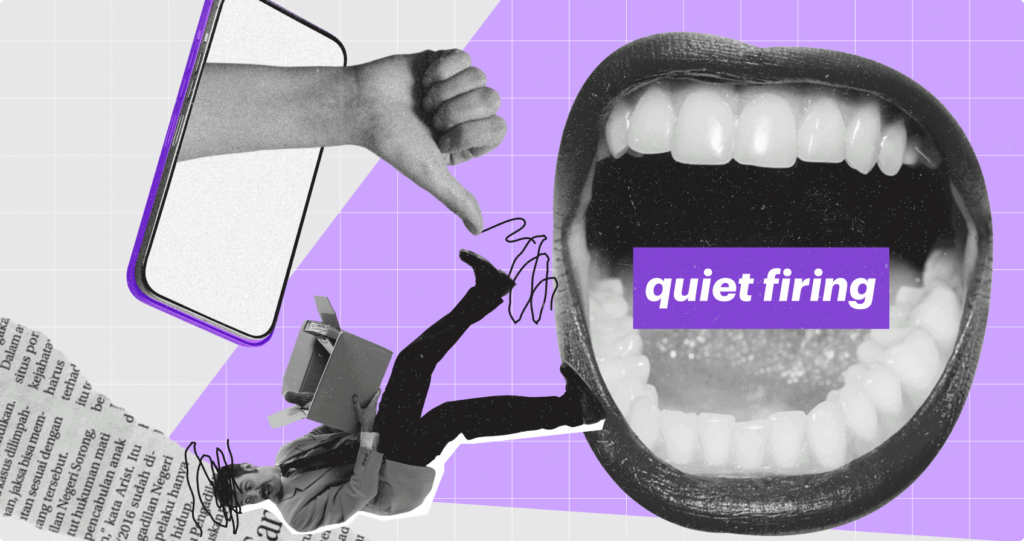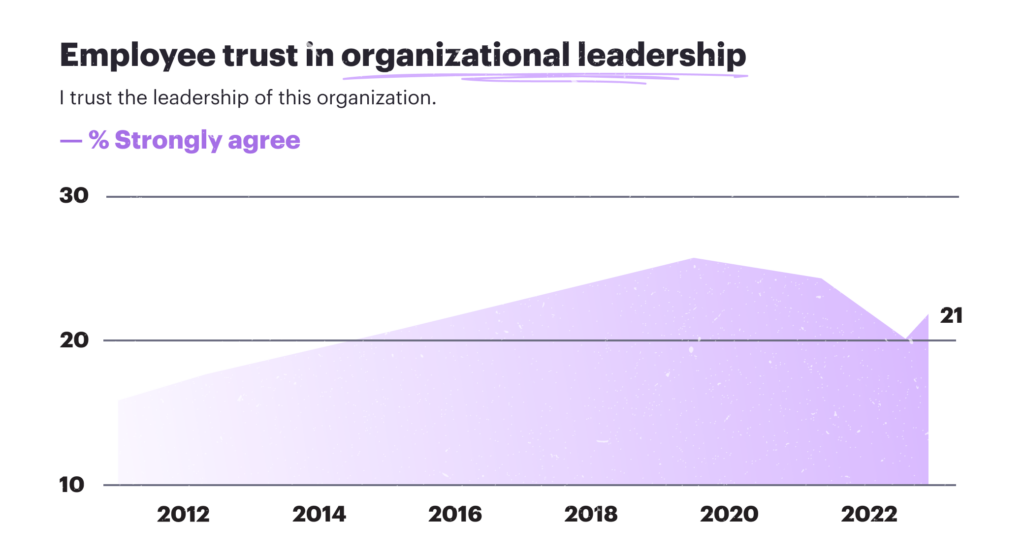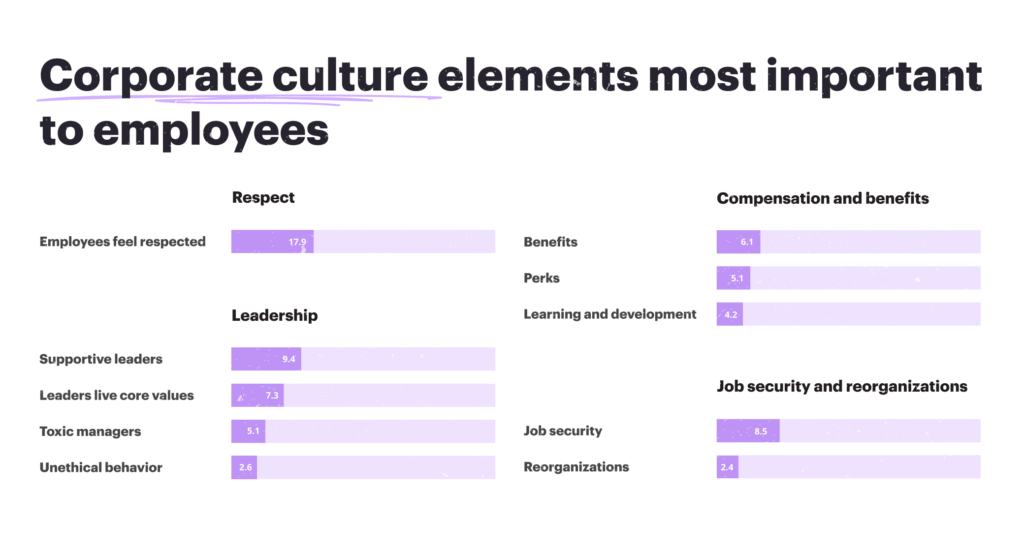
In a post-pandemic world, quiet quitting has taken on a life of its own. Adding kindling to the fire, many companies are now mandating a return to the office for remote and hybrid workers—a move that’s proved unpopular for many.
This is despite the 98% of employees who want to work remotely at least some of the time. These recalled workers are thus returning to company HQ disengaged and underperforming. Ergo, quiet quitting is a real threat to business productivity.
But have you also heard of “quiet firing”? Quiet firing can be as insidious within your organization as mentally checked-out employees. In fact, it’s arguably worse, as it is a bad reflection on your business and implies a severe managerial defect.
In 2023, you’ve likely witnessed quiet firing at some point—but possibly without even being aware of it. Don’t worry, though—in this article, we’ll answer what it is, how to spot it, and what to do about it.
Understanding quiet firing
Let’s begin by defining what quiet firing is.
What is it?
Quiet firing happens when a manager is unsupportive of an employee’s development, productivity, and/or career progression. It’s often an intentional course of action, where a manager hopes to nudge a worker to quit gradually.
A recent survey found that only 21% of employees trust in leadership. Quiet firing is another disease that poisons company-wide trust in managers, making it an incredibly damaging trend.

Inadequate management can also unintentionally quiet fire team members. Whether deliberate or not, it reflects poorly on leadership if managers force a team member’s hand by withdrawing support and guidance.
In either of these scenarios, both parties will experience harmful consequences.
Organizational impact
Quiet firing doesn’t solely affect the employee who’s being pushed out; it impacts your entire organization. Other team members will notice the withdrawal of support and coaching. Quiet firing trends and habits may also create discord across the department and other business areas.
Such divisive tactics are at loggerheads with encouraging teamwork and collaboration in your business. Besides creating discord, quiet firing negatively impacts your company culture. Other leaders might observe and replicate such behavior, while subordinates – expect to be next on the chopping block.
Either way, this directly opposes building a productive and collaborative environment. When people struggle to work together, everyone’s job becomes more complex, lowering employee morale across your organization.
By turning up the heat, quiet firing may inadvertently spread malcontent and job dissatisfaction to others. This creates a wildfire of disengagement that can fuel mass quitting, much like the Great Resignation of 2021.
What most underperforming employees require is an alternative management style. In other words, managers who quiet fire leave untapped potential to go to waste. Treating a targeted employee poorly on the way out can also burn bridges.
You can be confident that team members who experience quiet firing will let colleagues, peers, and industry contacts know about it. Word will get out about your poor leadership and toxic company culture, meaning the negative reputations of various leaders and leadership within your company will curtail your ability to recruit top talent.
6 Strategies to combat quiet firing
Many times, quiet firing is subtle and difficult to spot. Even for the employees being cut out or neglected, it can be nearly impossible to prove they’ve received unfair treatment.
The best way to weed out quiet firing from your company culture is to be proactive. Here are some easy ways to fight against this harmful phenomenon.
Enforce clear communication channels
Communication channels such as team messaging, phone calls, and email should be open and transparent for everyone. These should act as the first line of communication for team members, supervisors, and management.
But that’s just the beginning. You can be proactive by building policies that encourage weekly and daily communication. Conversations don’t have to be strictly about tasks and projects. They can also be to check in or touch base.
Doing this forces the hands of your managers. They can’t remain “quiet” if instructed to contact each employee regularly.
Additionally, provide transparent policies for promotions, pay raises, and bonuses, and implement HR tools, like payslip software, to give employees an accessible avenue for sorting out payment issues.
Nurture a positive work environment
Establishing a healthy workplace culture will help fend off quiet firing. You can maintain a positive work environment by formulating and following a plan.

A survey found the corporate culture elements that matter most to employees are feeling respected and having supportive leaders.
You can nurture a workplace culture that prioritizes these elements by doing the following:
- Set clear organizational and departmental goals. Be transparent when it comes to areas such as KPIs and performance assessments.
- Respect employees. Put policies in place to ensure every team member feels valued, listened to, and respected.
- Foster employee recognition programs. Organizations should encourage employees to achieve more and feel valued for their hard work.
- Promote social gatherings. Group outings and non-office events are a great way to encourage team building. They also promote interactions between employees from different departments and ranks.
- Impose zero-tolerance policies. Establish HR directives that deal with all forms of harassment in the workplace.
- Keep it lighthearted. You can maintain a professional environment while allowing for fun at certain times. Encouraging a bit of humor and non-work-related discussions helps ease stressful situations and reduce employee burnout.
Offer regular feedback
Gallup found that just 7% of US workers strongly agree that communication is accurate, timely, and open where they work. A mere 26% of employees strongly agreed that their manager’s feedback “helps them do better at work.”
This statistic should be alarming because your team likely feels that communication isn’t open and your managers aren’t giving valuable feedback.
Annual or six-monthly reviews are some of the many occasions to give feedback. Managers should also use less formal situations like quick chats in the halls and video meetings to provide regular feedback.
Managers should also be 100% willing to have difficult conversations during formal meetings like reviews. After all, struggling employees can’t be expected to fix issues if they aren’t even aware of them!
Promoting regular feedback from leadership fosters a more open workplace. Of course, this only works if managers are trained to give valuable and honest feedback.
Implement employee self-evaluation to encourage self-reflection as well. Looking inward will help your team promote a culture of openness and accountability. Remember, it doesn’t have to only be about constructive criticism and “areas for improvement.”
Train your leaders to tell individuals when they’re doing a good job too. Employees often aren’t looking to be recognized for big projects or milestones; it’s the little, everyday things they might feel go unnoticed.
Foster employee participation and dialogue
Good communication is kryptonite to quiet firing, so you want to build a workplace that fosters employee participation.
There are several ways to drive two-way dialogue effectively. One is to gather employee feedback frequently. Supervisor and team member feedback can shine a spotlight on quiet firing practices, helping you nip the problem in the bud by either re-training problem managers or sending them on their way.
Employee feedback forms can also highlight any issues in the workplace. Fresh suggestions help innovate business processes, boost productivity, or save money. The best way to nurture employee participation and encourage transparency is to make sure you act on the feedback given.
Leveraging automation technology can encourage better communication and more open dialogue. Modern services can streamline team communication channels and make leaders more accessible to subordinates. Tools such as small business payroll software and other HR solutions empower workers with access to information and encourage improved enrollment in benefits programs.
Another area where you can boost engagement is the decision-making process. For example, providing communication channels allows team members’ voices to be heard more easily. This is especially helpful with policies, procedures, and workplace benefits.
Providing opportunities for learning and career development also promotes employee dialogue. Growth opportunities like coaching and mentoring allow for cross-level and cross-departmental interactions. Besides professional development, your employees can learn from other leaders throughout the organization.
By building trust in these ways, employees will feel better able to identify unfair workplace treatment and report this to higher-ups rather than giving into these practices and quitting.
Address issues promptly
Quiet firing can quickly become an epidemic—even a pandemic—if it goes soft-pedaled. If one manager is displaying problematic behavior, it’s only a matter of time before a colleague observes and imitates it.
This is even more likely when senior leadership approves of this tactic. Tenured managers will be looked up to for their experience. Other managers will begin to think, “That’s an acceptable way to get rid of someone.”
So, putting strict policies in place will allow for swiftly dealing with quiet firing practices. You’ll need processes for identifying and reporting this and HR solutions put in place. Also, one of the ways to combat quiet hiring is creating educational materials that are accessible to all employees, so they know what it is and that it absolutely won’t be tolerated.
Besides dealing with unsupportive managers, you can train HR on quick fixes for quiet firing, such as lateral moves and cross-departmental coaching. These options will help you get a “quiet fired” employee to safe waters as quickly as possible while dealing with the culprit.
Provide emotional support
To promote trust and communication, employers must create a sense of psychological safety for their employees. One way leadership can provide emotional support is through the language they use.
Here are some of the speech patterns to avoid when offering emotional support:
- Minimization. Devaluing an individual’s problems by saying everyone feels or experiences something.
- Dismissiveness. Making claims that an individual shouldn’t be feeling or doesn’t have a reason to feel a certain way.
- Giving unwanted solutions e.g., “Just get a babysitter” or “Just take the bus.”
- Negation. Denying an emotion or problem e.g., “That’s nothing.”
You’ll also need managers with emotional intelligence to help combat this phenomenon. To adequately understand the feelings of others, they’ll need:
- Self-awareness – to understand other people’s emotions and how they impact team members and colleagues.
- Self-regulation – to manage their own emotions and remain objective in stressful situations.
- Social awareness – to develop the ability to perceive other people’s emotions.
- Social skills – to learn using emotions to motivate others, resolve conflicts, and successfully work together as a team.
Final thoughts
You’ve come here wanting an answer to one question: “What is quiet firing?” Now you know. That said, quiet firing can be challenging to identify. Like a thief in the night, it can run off with your positive company culture and leave you with only a toxic work environment.
So, the question isn’t whether quiet firing exists in your company but whether you’re taking steps to prevent it from taking root.
Taking a proactive approach is the only way to stop it. You can build a more engaging and collaborative culture that increases employee engagement and productivity and guards against quiet firing by getting ahead of the curve.

